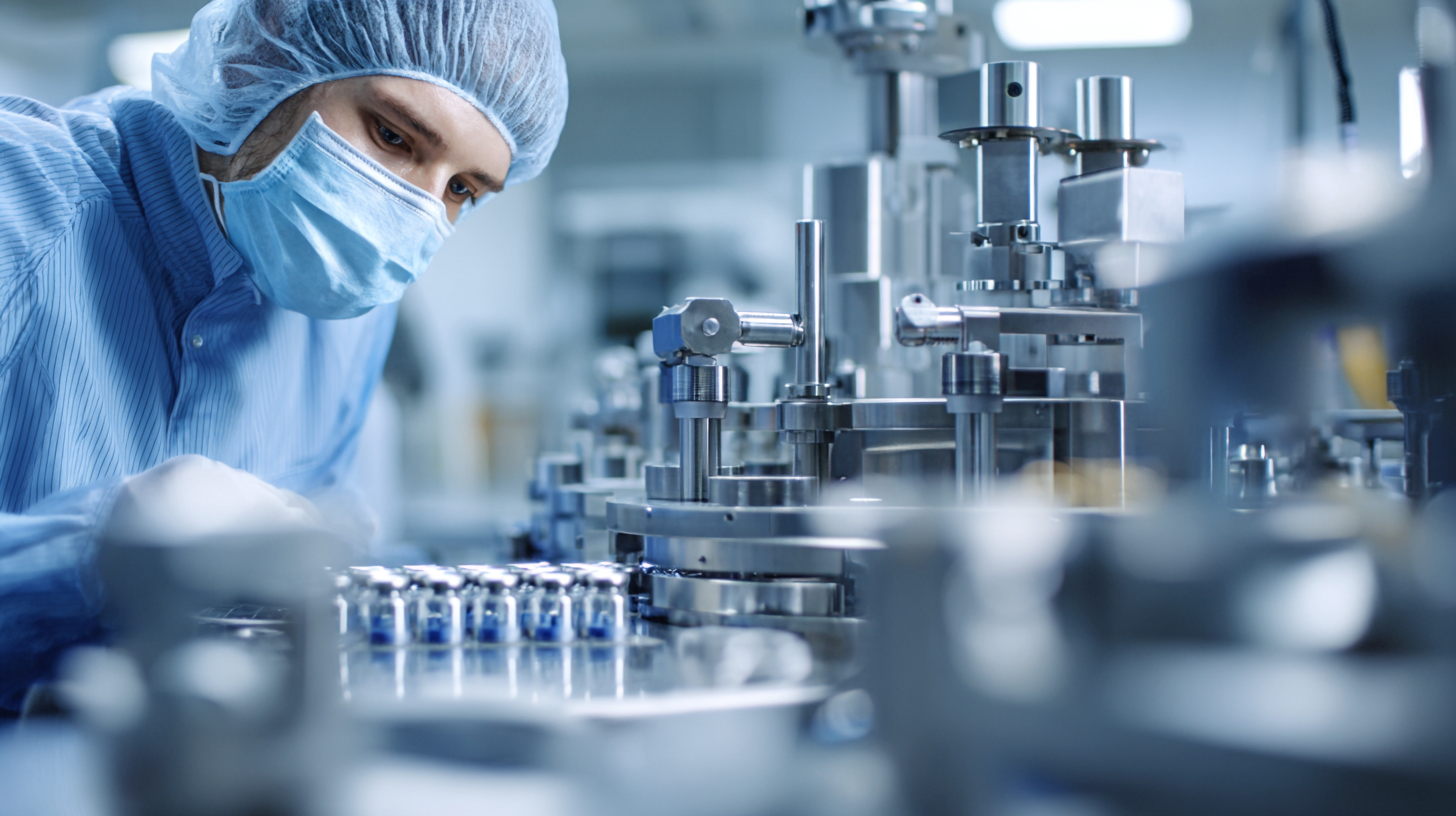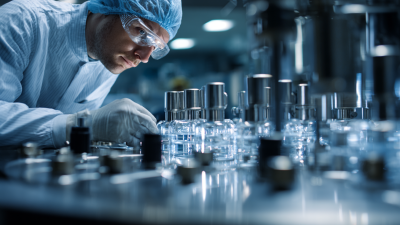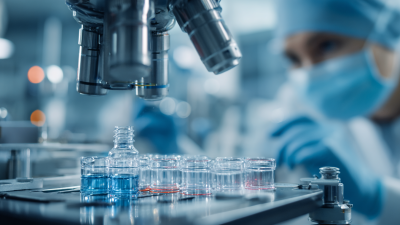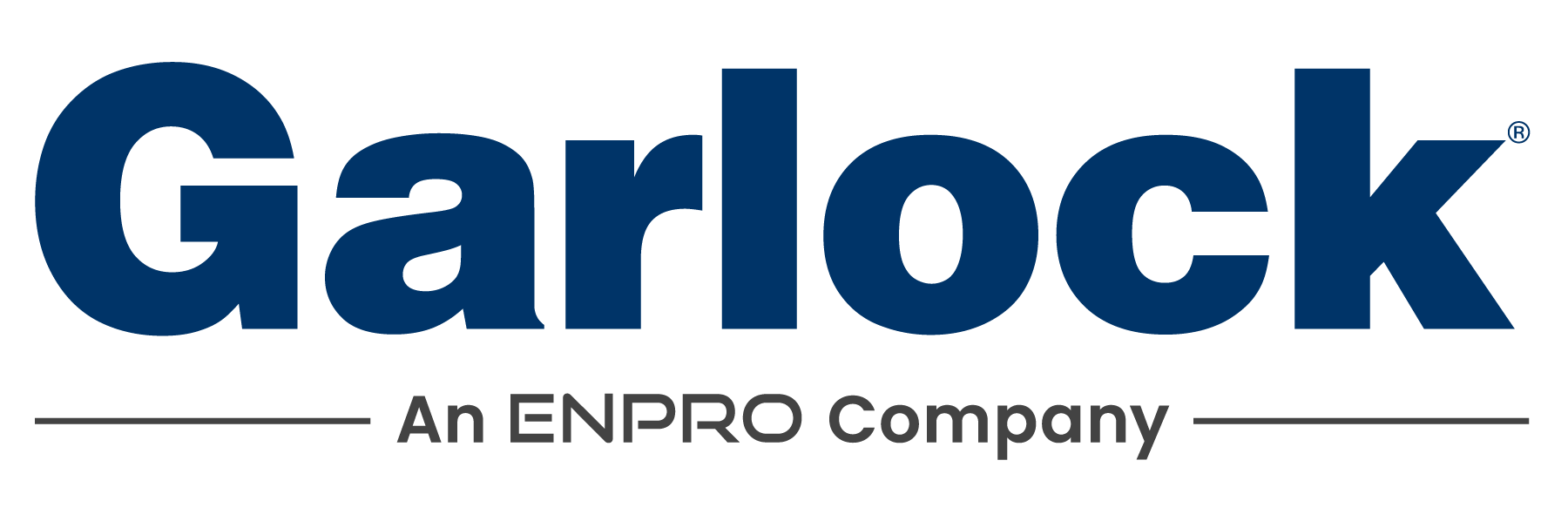Innovative Trends in Pharma Equipment for Enhanced Pharmaceutical Manufacturing Efficiency
As the pharmaceutical industry continues to evolve, the importance of innovative trends in pharma equipment cannot be overstated. According to a recent report by the International Society for Pharmaceutical Engineering (ISPE), advancements in manufacturing technologies are projected to enhance productivity by up to 30% over the next five years. With the increasing demand for higher quality and faster delivery of pharmaceutical products, manufacturers are turning to cutting-edge pharma equipment, which integrates automation and data analytics to streamline processes and reduce costs. The global market for pharmaceutical manufacturing equipment is anticipated to reach $10.8 billion by 2025, highlighting a significant shift toward modernization in the sector.

This article will explore the latest innovations in pharma equipment and their impact on enhancing manufacturing efficiency, providing insights into how companies can leverage these technologies to stay competitive in a rapidly changing environment.
Emerging Digital Technologies Transforming Pharma Equipment Landscape
Emerging digital technologies are revolutionizing the pharmaceutical equipment landscape, driving a shift towards enhanced manufacturing efficiency. The integration of advanced automation systems, powered by artificial intelligence and machine learning, is enabling real-time data analysis and decision-making on the production floor. This not only streamlines operations but also contributes to higher precision and quality control, crucial in an industry where compliance and consistency are paramount.
Moreover, the adoption of the Internet of Things (IoT) is fostering interconnected systems that facilitate seamless communication between equipment. By leveraging IoT, manufacturers can monitor equipment conditions and performance metrics in real-time, allowing for predictive maintenance and reducing downtime. This data-driven approach enhances operational agility and responsiveness, ultimately leading to reduced costs and improved output in pharmaceutical manufacturing. The convergence of these technologies heralds a new era in the pharma industry, where innovation and efficiency go hand in hand.
Integration of IoT for Real-Time Monitoring in Pharmaceutical Manufacturing
The integration of the Internet of Things (IoT) in pharmaceutical manufacturing is bringing transformative changes to the industry, particularly in the realm of real-time monitoring. The cold chain data logger market, estimated to reach $1,329.99 million by 2025 and expand to $2,605.92 million by 2033, showcases a significant growth rate of 9.0%. This upward trend highlights the increasing demand for precise temperature control and monitoring within the pharmaceutical supply chain, ensuring the integrity of temperature-sensitive medications and vaccines.

Furthermore, the global level sensor market is projected to grow from $8.93 billion in 2025 to $11.92 billion by 2032, with a compound annual growth rate of 4.2%. This growth signifies the rising importance of various sensors in pharmaceutical production processes, enabling manufacturers to achieve greater accuracy, efficiency, and compliance with regulatory standards. By leveraging IoT technologies, pharmaceutical companies can enhance their operational efficiency, minimize risks, and ensure the highest quality of their products.
Advancements in Robotics Enhancing Precision and Efficiency in Production
The pharmaceutical manufacturing landscape is undergoing a significant transformation, primarily driven by advancements in robotics. These technologies are not only enhancing precision in production processes but also increasing overall efficiency. By incorporating automated robotic systems, manufacturers can achieve higher accuracy in drug formulation, minimizing human error and ensuring consistent quality. Robots equipped with advanced sensors and artificial intelligence are capable of performing complex tasks, such as precise mixing, filling, and packaging, which are critical for the production of pharmaceuticals.
Furthermore, the integration of robotics into the manufacturing workflow allows for real-time monitoring and data collection. This capability leads to improved decision-making and the ability to quickly adapt to production demands. Robotic systems can operate continuously, reducing downtime and increasing throughput. As these technologies evolve, their potential to streamline operations further and reduce operational costs becomes clearer, making them indispensable in the quest for enhanced manufacturing efficiency in the pharmaceutical industry.
Innovative Trends in Pharma Equipment for Enhanced Pharmaceutical Manufacturing Efficiency
| Equipment Type | Key Features | Benefits | Efficiency Improvement (%) | Adoption Rate (%) |
|---|---|---|---|---|
| Robotic Dispensing Systems | High precision automation, real-time monitoring | Reduced human error, increased throughput | 30% | 75% |
| Automated Packaging Lines | Integrated labeling and sealing, compact design | Faster packaging time, reduced labor costs | 25% | 60% |
| Intelligent Production Systems | AI-driven data analytics, predictive maintenance | Optimized resource management, reduced downtime | 40% | 50% |
| Automated Quality Assurance | Vision systems, real-time quality control | Improved product quality, faster response to defects | 20% | 65% |
| Collaborative Robots (Cobots) | Safe interaction with human operators, versatile tasks | Enhanced flexibility, reduced training time | 15% | 55% |
Data Analytics: Driving Informed Decisions in Pharma Equipment Utilization
Data analytics has emerged as a game-changer in the pharmaceutical industry, particularly in optimizing equipment utilization and manufacturing processes. By leveraging vast amounts of operational data, companies can uncover actionable insights that enhance productivity and reduce operational costs. Advanced analytics tools enable manufacturers to monitor equipment performance in real-time, pinpoint inefficiencies, and predict maintenance needs, leading to improved uptime and lower risk of production delays.
Moreover, the integration of data analytics within the pharmaceutical manufacturing landscape allows for smarter decision-making. Through predictive analytics, companies can forecast demand trends and adjust their production schedules accordingly, minimizing waste and aligning output with market needs. This informed approach not only boosts efficiency but also enhances regulatory compliance and quality control, as manufacturers can identify and rectify potential issues before they escalate. As the industry continues to embrace digital transformation, data-driven strategies will play a crucial role in shaping the future of pharmaceutical equipment utilization.

Sustainable Practices in Pharma Equipment Design for Environmental Responsibility
Sustainable practices in pharmaceutical equipment design are crucial for enhancing environmental responsibility while maintaining manufacturing efficiency. The pharmaceutical industry is increasingly focusing on reducing its ecological footprint by integrating eco-friendly materials and energy-efficient technologies into equipment design. For instance, manufacturers are now incorporating recyclable components and reducing waste during the production process. This shift not only benefits the environment but also encourages companies to adopt more sustainable operational practices.
**Tip:** When evaluating pharmaceutical equipment, consider suppliers that prioritize sustainability in their manufacturing processes. Look for third-party certifications that highlight eco-friendly practices and materials.
Moreover, advanced technologies such as IoT and AI play a significant role in optimizing energy consumption in pharmaceutical manufacturing. Smart equipment can monitor energy use in real-time, allowing companies to identify inefficiencies and implement corrective measures. This not only lowers operational costs but also supports a commitment to sustainability by minimizing energy waste.
**Tip:** Implement a regular review of energy usage in your manufacturing processes to identify areas for improvement. Setting achievable sustainability goals can further enhance your responsibility towards environmental stewardship.
Innovative Trends in Pharma Equipment for Enhanced Pharmaceutical Manufacturing Efficiency
Related Posts
-

Unlocking Global Markets: Top 7 Certifications for Best Pharmaceutical Equipment Exports
-

How to Optimize Efficiency in Pharmaceutical Processing Equipment
-

What is the Impact of Advanced Pharma Equipment on Global Drug Production Efficiency
-

5 Best APIs Reshaping the Future of the Pharmaceutical Industry
-

Ultimate Guide to Choosing the Right Tablet Coating Machine for Your Production Needs
-

10 Essential Insights for Pharmaceutical Manufacturing Success
